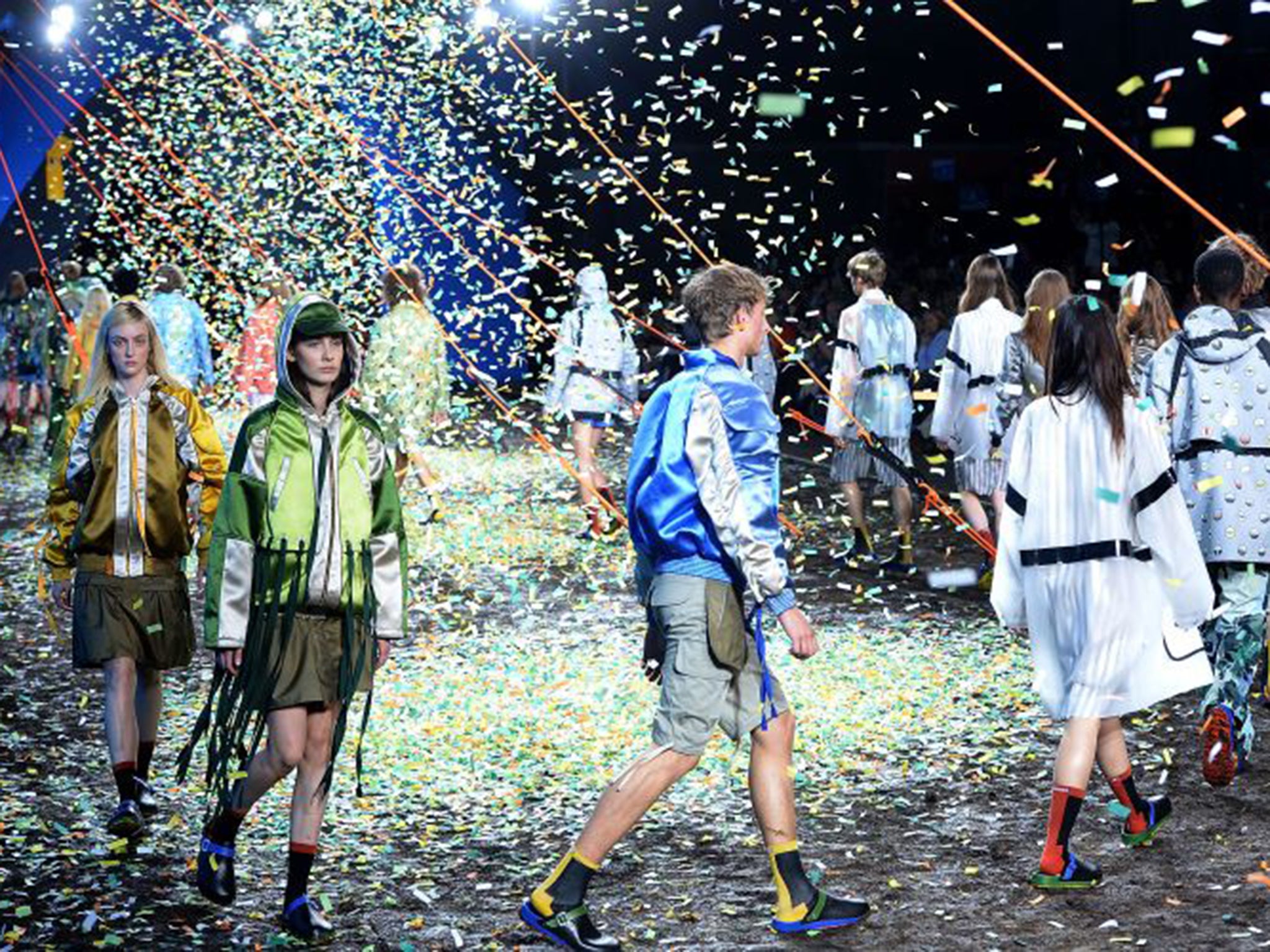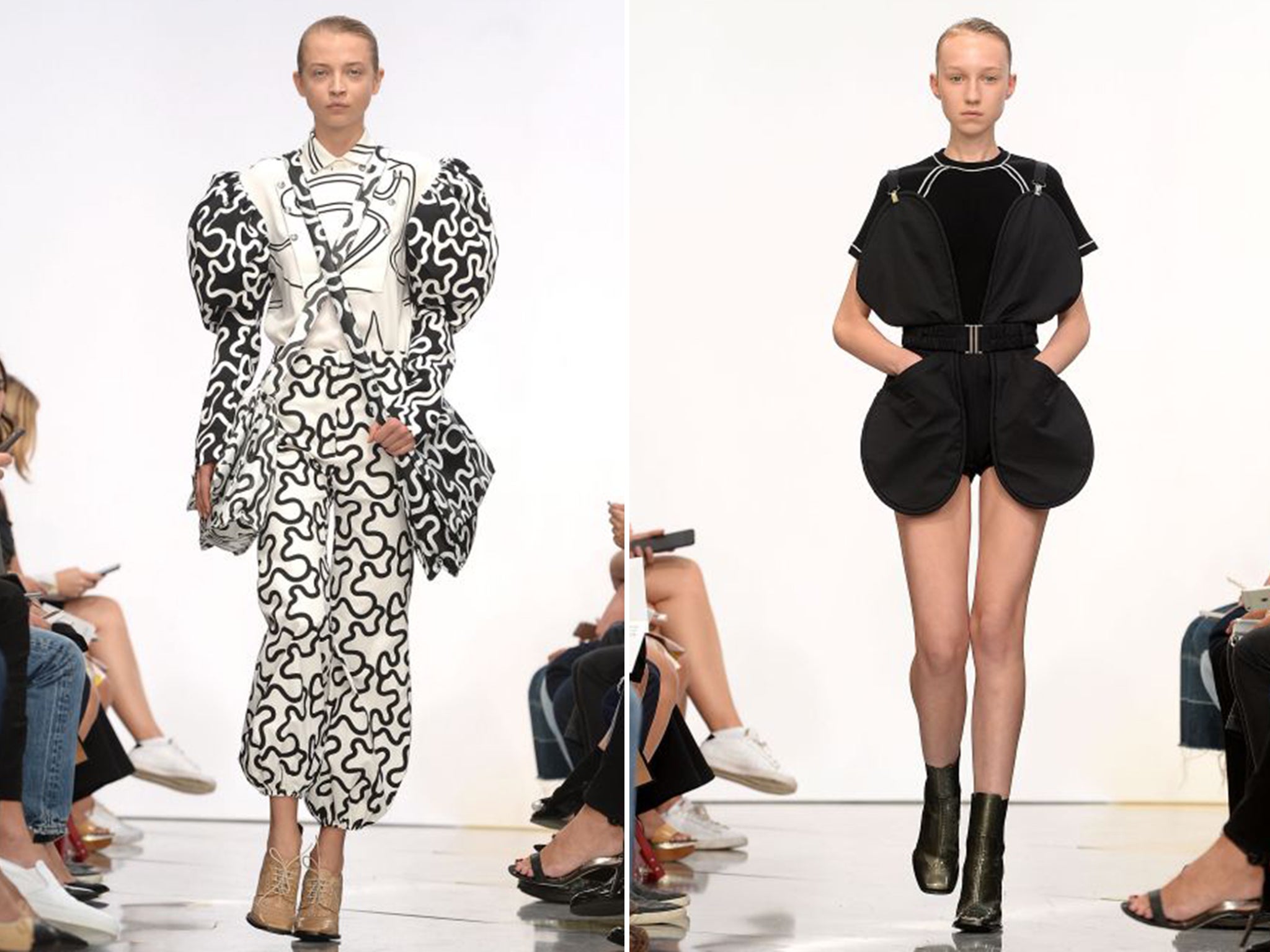London Fashion Week 2015: Hunter struggled, but not JW Anderson – his return to form saw soldier meet socialite
Strapped for ideas?

For the wrinkled, weary press not-so-fresh off the red eye from New York, the big draw of London Fashion Week is ideas. That’s what’s pulled in Donatella Versace too, who chose the city to show the latest collection from Versus – the sexy, teenaged sister of the grown-up Versace label, designed by young buck Anthony Vaccarello.
Fresh ideas aren’t the draw at Hunter, of course. It’s a jumped-up Wellington-boot brand manned by Stella McCartney’s husband that once had one half-good conceit – high-fashion galoshes. Granted, it has milked that cash cow for far more than its worth – to the tune of a 2014 turnover of more than £80m. That is what justified the presence of the press at the latest show, of much the same stuff, by Alasdhair Willis, spouse of said McCartney, who was also there. I mean familiar stuff both for Hunter and the spring/summer 2016 season as a whole, but the latter is far more interesting to talk about.
The leitmotif of Hunter’s show was the dangling strap, like loose guy ropes on a wayward two-man tent. They tried to introduce a new “icon” (their word, decidedly not mine) – a clog. They resembled those rubberised clogs that are an essential component of nurses uniforms – both aesthetically and by the fact that you could only imagine someone wearing them if they had to.
Anyway. The interesting things were those tangled ties, a design motif we’ve seen plenty of in New York, and will doubtless see far too much of in London. They make it look a bit like designers either haven’t quite finished, or just haven’t made up their minds what to do. Both are a major issue with fashion right now, highlighted by a season that, by and large, feels weak and undecided.
Neither is true of Jonathan Anderson, whose own-label collection felt like a return to form. Backstage, Anderson raked his hand through his hair and pontificated, asserting that his woman this season looked like a new kind of army, and that it was about “a woman’s odyssey”. It sounded like gumpf, but when you thought about it, you got it, with the waxed cottons and camouflage-ish patterns, and saddle-bags slung two-at-a-time over the torso to hang at the hip. There was an air of Lara Croft to all that, but it was Croft meeting Gloria von Thurn und Taxis – otherwise known as Princess TNT, the dynamite socialite of the Eighties, most often clad in puffed-out, over-the-top ball gowns. Her presence was felt in Anderson’s generous gigot sleeves, ballooning his models’ skinny shoulders to gargantuan proportions. There was a touch of Jean Paul Gaultier to the exposed brassieres and waist cinchers over clinging knit skirts and dresses, emphasising curves. So if Anderson was thinking of a feminine odyssey, it was about the rediscovery of the landscape of the female body, or perhaps its reengineering.
Those gowns reminded me of Tom Wolfe’s “social X-rays”, society women whose flounced and tucked and ruched surfaces compensated for the concupiscence missing from their bodies. There was a lustiness to this JW Anderson offering, a lust not only for the body, but for fashion itself. The American hyper-intellectual Fran Lebowitz grumbled over the show’s soundtrack – in snippets selected from Scorsese’s documentary on Lebovitz, Public Speaking – about Andy Warhol’s act of making fame famous, griping “that’s what happens when an inside joke gets into the water supply”. You’ve sometimes felt that about Anderson’s shows, with their sometimes alienating clothing (I half-though he said a woman’s “oddity” rather than “odyssey” backstage).

According to Anderson, it “changed his perspective” on his creativity. What it boiled down to, though, was something more concrete and less cerebral. Maybe he was thinking about Warhol’s cult of fame, and its impact on society and creativity, of fashion designers as superstars, and of bringing it back to the craft? Or maybe he was just thinking about Warhol silk-screening socialites in their Christian Lacroix dresses, and making a lot of money?
Join our commenting forum
Join thought-provoking conversations, follow other Independent readers and see their replies
Comments
Bookmark popover
Removed from bookmarks